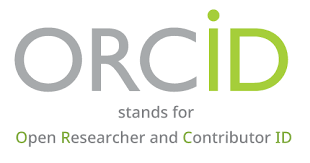Prevalence of excess weight and associated factors in 7-10 year old children from Vitória - ES, Brazil
school based survey
DOI:
https://doi.org/10.47456/rbps.v13i1.1326Keywords:
Excesso de peso, Sobrepeso, Criança, Prevalência, Fatores associadosAbstract
Introdução: As prevalências de sobrepeso e obesidade vêm crescendo em todo o mundo e em todas as faixas etárias, incluindo crianças e adolescentes. Objetivo: Este estudo buscou determinar a prevalência de excesso de peso e fatores associados em crianças de sete a dez anos. Metodologia: Trata-se de estudo transversal de base escolar com 1.282 crianças (7-10 anos) residentes em Vitória/ES, Brasil. Foram coletados dados antropométricos e analisados de acordo com a recomendação da International Obesity Task Force. Pais e/ou responsáveis forneceram informações sobre hábitos alimentares, atividade física, peso ao nascer e sobre alimentação de seus filhos, dados socioeconômicos e parentais. Resultados: 23,3% da amostra apresentaram excesso de peso (15,3% sobrepeso + 8% obesidade). Após análise multivariada, constatou-se que ser filho único (RC 1,73, IC95% 1,09-2,75), macrossômico (RC 3,45 IC95% 1,34-8,84) e ter pai com sobrepeso (RC 1,87, IC95% 1,21-2,89) aumentaram o risco para o excesso de peso, enquanto nível de escolaridade superior materno o diminuiu (RC 0,38, IC95% 0,19-0,78). Conclusão: A prevalência de excesso de peso encontrada é alta e similar às observadas em países desenvolvidos, mostrando-se fortemente associada à estrutura familiar, portanto medidas adotadas em fases precoces da vida e focadas na família são determinantes para a redução do excesso de peso.
Downloads
References
ABA, ANEP, ABIPEME. Critério de classificação econômica Brasil - 1997. Reformulação do critério anterior (ABA–ABIPEME) [Internet]. [citado 2007 dez 4]. Disponível em: http://www.anep.org.br/mura1/anep/
American Academy of Pediatrics. Committee on Nutrition. Policy statement: prevention of pediatric overweight and obesity. Pediatrics. 2003;112(3):424–30.
Anjos LA, Castro IRR, Engstrom EM, Azevedo AMF. Crescimento e estado nutricional em amostra probabilística de escolares no município do Rio de Janeiro, 1999. Cad Saúde Pública. 2003;19(s1):s171–9.
Baskin ML, Ard J, Franklin F, Allison DB. Prevalence of obesity in the United States. Obesity. 2005;6(1):5–7.
Brasil LMP, Fisberg M, Maranhão HS. Excesso de peso de escolares em região do Nordeste Brasileiro: contraste entre as redes de ensino pública e privada. Rev Bras Saúde Matern Infant. 2007;7(4):405–12.
Cole TJ, Bellizzi MC, Flegal KM, Dietz WH. Establishing a standard definition for child overweight and obesity worldwide: international survey. BMJ. 2000;320(7244):1–6.
Costa RF, Cintra IP, Fisberg M. Prevalência de sobrepeso e obesidade em escolares da cidade de Santos, SP. Arq Bras Endocrinol Metab. 2006;50(1):60–7.
Daniels SR, Arnett DK, Eckel RH, Gidding SS, Hayman LL, Kumanyika S, et al. Overweight in children and adolescents: pathophysiology, consequences, prevention, and treatment. Circulation. 2005;111(15):1999–2012.
DeLany JP. Role of energy expenditure in the development of pediatric obesity. Am J Clin Nutr. 1998;68(4):s950–5.
Guimarães LV, Barros MBA, Martins MSAS, Duarte EC. Fatores associados ao sobrepeso em escolares. Rev Nutr. 2006;19(1):5–17.
Kac G, Velasquez-Melendez GA. Transição nutricional e a epidemiologia da obesidade na América Latina. Cad Saúde Pública. 2003;19(s1):s4–5.
Lamerz A, Kuepper-Nybelen J, Wehle C, Bruning N, Trost-Brinkhues G, Brenner H, Hebebrand J, Herpertz-Dahlmann B. Social class, parental education, and obesity prevalence in a study of six-year-old children in Germany. Int J Obes. 2005;29(4):373–80.
Lobstein T, Frelut ML. Prevalence of overweight among children in Europe. Obes Rev. 2003;4(4):195–200.
Magarey AM, Daniels LA, Boulton TJ, Cockington RA. Predicting obesity in early adulthood from childhood and parental obesity. Int J Obes Relat Metab Disord. 2003;27(4):505–13.
Martins EB, Carvalho MS. Birth weight and overweight in childhood: a systematic review. Cad Saúde Pública. 2006;22(11):2281–300.
Monteiro CA, Conde WL, Popkin BM. Part I. What has happened in terms of some of the unique elements of shift in diet, activity, obesity, and other measures of morbidity and mortality within different regions of the world? Is obesity replacing or adding to undernutrition? Evidence from different social classes in Brazil. Public Health Nutr. 2002;5(1A):105–12.
Monteiro CA, Mondini L, Souza ALM, Popkin BM. Da desnutrição para a obesidade. In: Monteiro CA, organizador. Velhos e novos males da saúde no Brasil. São Paulo: Hucitec; 1995. p. [cap. 3].
Oliveira AMA, Cerqueira EMM, Oliveira AC. Prevalência de sobrepeso e obesidade infantil na cidade de Feira de Santana-BA: detecção na família x diagnóstico clínico. J Pediatr (Rio J). 2003;79(4):325–8.
Sichieri R, Nascimento S, Coutinho W. The burden of hospitalization due to overweight and obesity in Brazil. Cad Saúde Pública. 2007;23:1721–7.
Sichieri R, Souza RA. Estratégias para prevenção da obesidade em crianças e adolescentes. Cad Saúde Pública. 2008;24(s2):s209–s34.
Strong W, Malina RM, Blimkie CJR, Daniels S, Dishman R, Gutin B, et al. Evidence based physical activity for school-age youth. J Pediatr. 2005;146(6):732–7.
Victora CG, Huttly SR, Fuchs SC, Olinto MT. The role of conceptual frameworks in epidemiological analysis: a hierarchical approach. Int J Epidemiol. 1997;26(1):224–7.
Whitaker RC, Wright JA, Pepe MS, Seidel KD, Dietz WH. Predicting obesity in young adulthood from childhood and parental obesity. N Engl J Med. 1997;337(13):869–73.
World Health Organization. Marketing food to children: the global regulatory environment. Geneva: WHO; 2004 [cited 2008 Oct 11]. Available from: http://whqlibdoc.who.int/publications/2004/9241591579.pdf
World Health Organization. Obesity: preventing and managing the global epidemic. Geneva: World Health Organization; 1998.
Downloads
Published
How to Cite
Issue
Section
License
Copyright (c) 2014 Revista Brasileira de Pesquisa em Saúde

This work is licensed under a Creative Commons Attribution-NonCommercial-NoDerivatives 4.0 International License.
Authors and reviewers must disclose any financial, professional, or personal conflicts of interest that could influence the results or interpretations of the work. This information will be treated confidentially and disclosed only as necessary to ensure transparency and impartiality in the publication process.
Copyright
RBPS adheres to the CC-BY-NC 4.0 license, meaning authors retain copyright of their work submitted to the journal.
- Originality Declaration: Authors must declare that their submission is original, has not been previously published, and is not under review elsewhere.
- Publication Rights: Upon submission, authors grant RBPS the exclusive right of first publication, subject to peer review.
- Additional Agreements: Authors may enter into non-exclusive agreements for the distribution of the RBPS-published version (e.g., in institutional repositories or as book chapters), provided the original authorship and publication by RBPS are acknowledged.
Authors are encouraged to share their work online (e.g., institutional repositories or personal websites) after initial publication in RBPS, with appropriate citation of authorship and original publication.
Under the CC-BY-NC 4.0 license, readers have the rights to:
- Share: Copy and redistribute the material in any medium or format.
- Adapt: Remix, transform, and build upon the material.
These rights cannot be revoked, provided the following terms are met:
- Attribution: Proper credit must be given, a link to the license provided, and any changes clearly indicated.
- Non-Commercial: The material cannot be used for commercial purposes.
- No Additional Restrictions: No legal or technological measures may be applied to restrict others from doing anything the license permits.
























